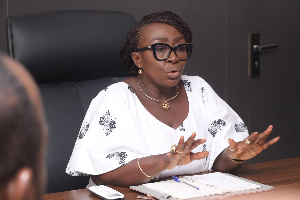In the second week of December last year, one issue that emerged at the energy sector front, particularly the downstream sector in Ghana and was discussed in the media was the increment of Bulk Oil Storage and Transportation (BOST) Company Limited’s margin.
The government, through the downstream regulator, National Petroleum Authority (NPA), announced a 100% increment of BOST Margin from three pesewas per litre or some cumulative 10,200,000.00 to six pesewas per litre or some cumulative 20,400,000.00 from consumers based on current conservation estimation of 340m litres of fuel consumed monthly.
The Unified Petroleum Fund was increased by 4.7 percent or GH¢1 (one pesewa) from 21 pesewas per litre to 22 pesewas per litre or some 3,420,000.00 cumulatively.
However, the increment in BOST Margin did not sit well with some interest groups especially a consumer advocacy group – Chamber of Petroleum Consumers, Ghana (COPEC).
The position of COPEC Ghana, which was championed by Duncan Amoah, was that the increment was going to cause more hardships on petroleum consumers hence the need to withdraw the increment.
In an interview with Accra-based Citi FM, Mr Duncan Amoah wondered why BOST should even be given a margin when private depots that operate in the country do not get any margin from commercial drivers (trotro) as well as taxi drivers.
He simply wanted the BOST margin to be scrapped. After few days of pressure on NPA and for that matter the Akufo-Addo administration, the regulator announced to the consuming public that the increment had been reversed. By that news, the Duncan Amoah-led COPEC was excited about the government’s decision.
My understanding was that BOST would have raked in GH¢10 million on a monthly basis if the government had stayed the increment. The company would have generated, at least, GH¢50 million by the end of May if the increment had remained.
I’m sure BOST would have utilised this amount wisely and even gone ahead to borrow to start rehabilitation of some of its pipelines and storage tanks that are in deplorable state because of lack of funds.
In an interview with Business & Financial Times (B&FT), prior to the increment of the Margin, Managing Director of BOST, Edwin Obodai Provencal noted that the BOST Margin of GH¢0.3 pesewas was implemented in 2011 but it was not adjusted even though parliament had ratified that it should be increased to GH¢0.6 pesewas in 2017.
Meanwhile, the company needs more revenues to bring in more products, build infrastructure and trade among others. Mr. Provencal expressed, among other things, that he is dedicated to transforming BOST into a dividend paying organisation, but he was of the view that to be able to do that, it requires heavy investment in infrastructure and to generate the needed revenue that requires that the BOST Margin be increased.
“Our vision is to be the best in storage and transport in terms of revenue market share, which means that we should have the best storage and transportation infrastructure to transport the products throughout the country,” he said.
In his estimation, it was going to require an investment of about US$150 million to be able to turn the fortunes of BOST. Then at a media engagement on 27 December, 2020, it was revealed that BOST had 51 kilometres storage tanks, but as we speak, 15 kilometres of the pipelines are out of service.
This sad state of BOST recently, caught the attention of the Executive Director of Institute for Energy Security (IES) Nana Amoasi VII, also known as Paa Kwasi Anamua Sakyi, wrote a piece about the State of BOST’s pipelines.
In his article titled, ‘BOST abandons pipeline infrastructure at the expense of the state’ the author cited a report by the U.S. Association of Oil Pipelines (AOPL), which showed that 16.2 billion barrels (nearly 680 billion gallons) of petroleum products delivered through pipelines in 2014 in the United States, reached their destination safely by an amazing 99.999 percent.
Sadly, same could not be said when it comes to using Bulk Road Vehicles. According to the article, a study by the Manhattan Institute compared the safety of road, rail and pipeline hydrocarbon transportation and found that transporting oil by roadway had the highest rate of incidents with 19.95 per billion ton miles per year.
This was followed by rail with 2.08 per billion ton miles. Oil pipelines were found to be the safest with 0.58 serious incidents per billion ton miles.
Aside its safety records, pipelines have the advantages of being able to handle large volumes, having good continuity with 24-hour uninterrupted transportation, being unaffected by weather conditions in the transportation process, and having a low unit freight transportation cost.
This means the use of Bulk Road Vehicles (BRVs) for the transportation of fuel, which is done currently is not the best option. But how can BOST make use of pipelines when its pipelines have been down for years? The current infrastructural state of BOST, needs a serious attention.
If BOST were in a healthy state, it could have taken advantage of the recent dramatic fall in the crude oil prices to as low as U.S $17 per barrel in April, 22. 2020 and stored some products.
Despite the strong opposition to the BOST Margin increment, Managing Director of the company, Edwin Obodai Provencal did not give up on his quest to ensure that the Margin was increased to give the company a new life.
Business News of Wednesday, 17 June 2020
Source: thebftonline.com













